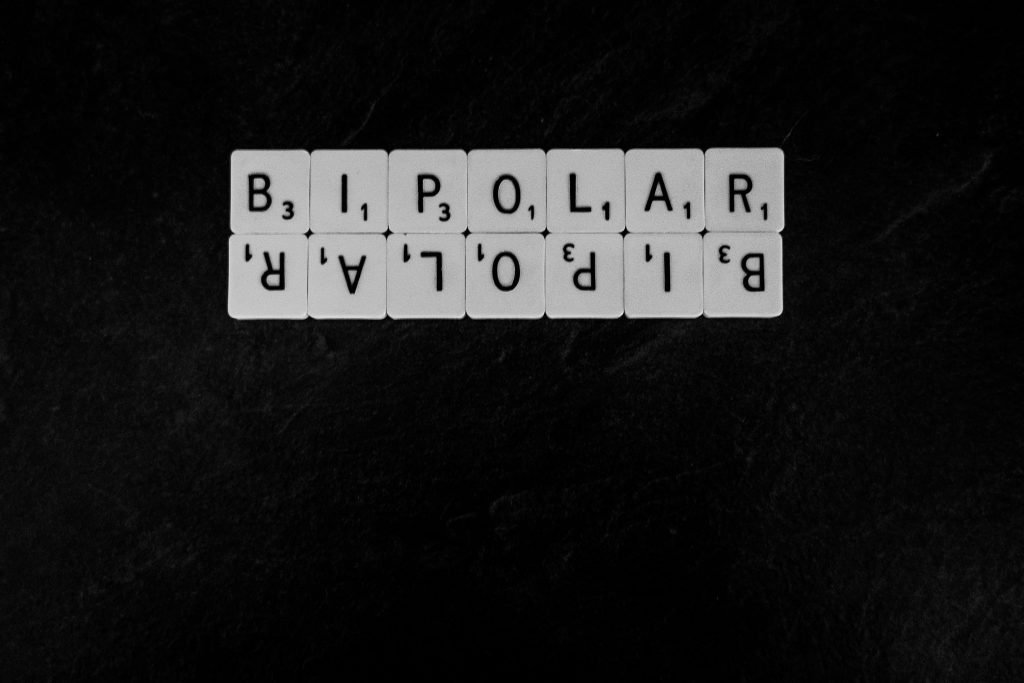Bipolar Disorder
Table of Contents
What is Bipolar Disorder?
Many natural phenomena are likened to spiritual processes; if you are happy, flowers have bloomed in your soul, if you are sad, your tears have been rain or vice versa, nature or spiritual diagnoses can be loaded; as in the phrase depressed weather. What does an earthquake look like in the spiritual? Of course, just as a great earthquake on the ground leads to results, a spiritual shock also has some important consequences. Manic attack, which is one of the diagnostic criteria of Bipolar Disorder-I and which I liken to a fault line, causes some cognitive destruction in the patient. The patient, who moves away from reality, starts to attract the attention of the people around him at that time. Hospitalizations and an intensive treatment process await the person in the tables where this situation, which continues to increase, gets worse, and if there is an ongoing working life, it is suspended until recovery occurs.
Although Bipolar Disorder seems to be quite common in the society, it can be interpreted as a mental strain that is so hidden and also referred to with some negative myths. It takes extra effort in many ways for people diagnosed with Bipolar Disorder to continue their lives from where they left off, especially after intense attacks. I started to work in this field, realizing that it is very important for those who are close or far from the disease, who are aware of this effort or not, to inform the society about Bipolar Disorder.
As in all other serious mental health problems, bipolar disorder requires some special treatment and support mechanisms to increase functional areas apart from medication. The treatment of a health condition that significantly affects people living with the disease and their families, requires the support of health institutions and especially business life in the public sphere. The most important reason for the necessity of this support is the recurring attacks of a person who does not suffer in normal life despite the illness, unless he is supported in his work and family life.
Recovery from bipolar disorder is not an end but a lifelong process. In this direction, Galen (129-216), who realized the power of work life in treatment, expressed how strong the functionality in the field of mental health was hundreds of years ago with the sentence “Work is the doctor of the person”.
Bipolar disorder is a diagnosis of mental health illness that shows that the human psyche can evolve to a tremendous recovery after a period of ‘manic attack’ in which the ability to assess reality disappears. Manic episode, which is one of the defining diagnostic criteria of bipolar disorder; It can be defined by an increase in the amount of mental and physical energy, the disappearance of sleep in some cases, weight loss, decrease in attention and cognitive functions, and the individual having some unrealistic thoughts (Jlyha et al., 2016).
Although mania draws the opposite image of depression, it is inevitable that both conditions will push the individual away from the functional areas. E.g; The individual, who moves away from reality due to mania, may be so disconnected from life that they cannot get out of bed due to depression. These striking ups and downs in the human psyche aroused a special desire to work on the subject, and inspired many artists and works in the artistic field as well as in the scientific field.
The first theoretical information about the history started to come in the first century AD, and it was defined by the German psychiatrist Emile Kreapelin about a hundred years ago with the expression “manic-depressive” as a different disease from schizophrenia. While the word ‘bipolar’ means ‘bipolar’ in Latin, it is the German psychiatrist Karl Leonhard who coined the term for the first time in the 1950s (Mason et al., 2016).
It is noteworthy that while it was defined as a manic-depressive illness before, it was changed to bipolar later on, in addition to the psychiatric classification system of bipolar disorder types, and efforts to reduce the stigmatizing effect of the definition of manic-depressive in the society. In this respect, especially in the social context, two different problematic issues are mainly experienced by the patients: The effect of the biological factors before the diagnosis and the sociological factors encountered after the diagnosis on mental health.

Bipolar Disorder in Terms of Work Life
“Healing is a process, a way of life, an attitude, an approach to the challenges of the day. It is not a perfect, linear process. From time to time we zigzag our way, falter, retreat, pick ourselves up and start over...What needs to be accomplished here is to cope with the challenges of disability, to re-establish a new and valued integrity and purpose within and beyond the limits of disability; It is the ability to create the determination to live, work and love in a society in which a person makes significant contributions” (Deegan, 1988).
Every year, March 30 is known as the day when bipolar disorder is tried to be explained and understood in various countries. Another significance of March 30 is that it is the birthday of Van Gogh, one of the first names that come to mind when bipolar is mentioned, as he also summed up his experience with his work and illness in a meaningful way: ‘I put my heart and soul into my work and lost my mind while doing it.
In recent years, improving the functionality of individuals diagnosed with bipolar disorder is seen as one of the main goals in treatment. Occupational functionality, which is one of the basic functional areas, can be defined as the ability of an individual to effectively perform his/her profession or job, to fulfill his/her authority and responsibilities, and to establish a harmonious relationship with the people he/she works with in the business environment (Frank et al., 2008). Business life, which is one of the functional areas, is very important for individuals to meet their economic and social needs, to continue their treatment and to cope with social stigma.
Undoubtedly, looking at bipolar disorder from the outside; Apart from working and producing about it, the process is of course not easy for individuals who get the diagnosis and experience this situation from the inside. When considered as a spectrum, its prevalence in recent years is 5% and its recurrence rate in two years is considered to be 60%, and its social and economic damage is remarkable (Yeloğlu, 2017). This disorder, which is claimed to be seen in 60 million people in the world and in one out of 70 people in our country, is seen in around two million people in our country. The fact that people with bipolar disorder, who are of working age, are away from work life both negatively affects the course of the disease and harms the country’s economy by causing loss of work force (Oral et al., 2007). So much so that early studies examining the devastating effect of bipolar disorder on work life emphasized the importance of the issue by pointing out that the economic loss that occurs when people diagnosed with bipolar disorder leave work life is approximately 45 million dollars for the United States alone (Wyatt & Henter, 1995). The main points that people have difficulties in business life are given below.
Turkey
0,92%
Europe
1,6%
USA
4,4%
Most Common Challenges in Business Life:
1) Explaining the disease,
2) Stigma,
3) Sleep (having to work until late hours, not being able to wake up early in the morning),
4) Attention (Many patients have difficulty concentrating and maintaining attention),
5) Difficulty in coping with work stress,
6) Inability to manage interpersonal relationships,
7) Inability to provide internal emotion regulation.
Perhaps the most important topic among the sociological reasons that complicate the treatment process can be considered in the sense of the pressure created by the stigma on the patient, which is frequently found in the literature in the field of mental health. In short, stigmatization is a person’s being considered defective due to his/her illness, physical or cultural condition, and viewed with a negative point of view by being evaluated as inadequate by the society. In this sense, although the stigma process may seem like some negative effects coming from the outside, it can usually be experienced in the inner judgment of the person who has the disease, and as a result, it leads to a conflicting self-perception. Internalized stigma causes a person to stay away from society and feel alienated from social life, and brings many problems with it.
Internalized stigmatization, which is considered as a kind of result of stigmatization, can be explained as the person’s burdening himself about his illness most of the time without being aware of it, and self-blame while trying to move on by drifting in a sense of worthlessness. In cases where it is effective enough to trigger a depressive episode, it is considered among the treatment targets by the experts working in the field of mental health. Untreated internalized stigma is known to hinder recovery (Watson et al., 2007).
Bipolar disorder is in the second place when the days of job loss are evaluated, and it is shown among the five most common causes when the work-inhibiting conditions are taken into account. Long-term unemployment and absenteeism, which are among the disabling conditions, have been found to be associated with low job performance (Dean and Gerner, 2004). In terms of symptoms and side effects, patients in the bipolar disorder group have a course that complicates the working environment and leads to deterioration in occupational functionality.
Neurocognitive impairments are common even in the remission period of bipolar disorder. In a recent meta-analysis in this field, twenty articles investigating the relationship between occupational functionality and neurocognitive factors were reviewed. In the light of the data obtained, neurocognitive impairment was found to be associated with decreased occupational functionality. Cognitive domains that seem to be particularly effective for the decline in occupational functionality are defined as executive function, verbal memory, processing speed, and attention. It is among the suggestions of the researchers that interventions targeting memory and attention areas, which are one of the basic needs of work life, can support the improvement of occupational functionality. Researchers, who saw that cognitive interventions generally increased the areas of functionality after they were first applied to schizophrenia patients, suggested that similar studies could also be effective on bipolar disorder (Duarte et al., 2016).

Mentalization (Social Cognition) Effect
Social cognition is one of the important determinants of professional functionality, which is widely used in the field of work life or mental health. Mentalization, also called social cognition in the related literature; It is defined as naming with a mental activity by perceiving the basic inner needs underlying human behaviors such as needs, desires, feelings, beliefs, goals, facts and shaping this externally observed process.
Mentalization rather represents mental processes in one’s relationship with oneself and others. The word ‘mentalization’ is originally derived from the word mind. The concept of ‘mentalization’, which emerged in the 1970s-1975s, was discussed together with the quality and quantity of the individual’s spiritual designs (Penn et al., 2005).



